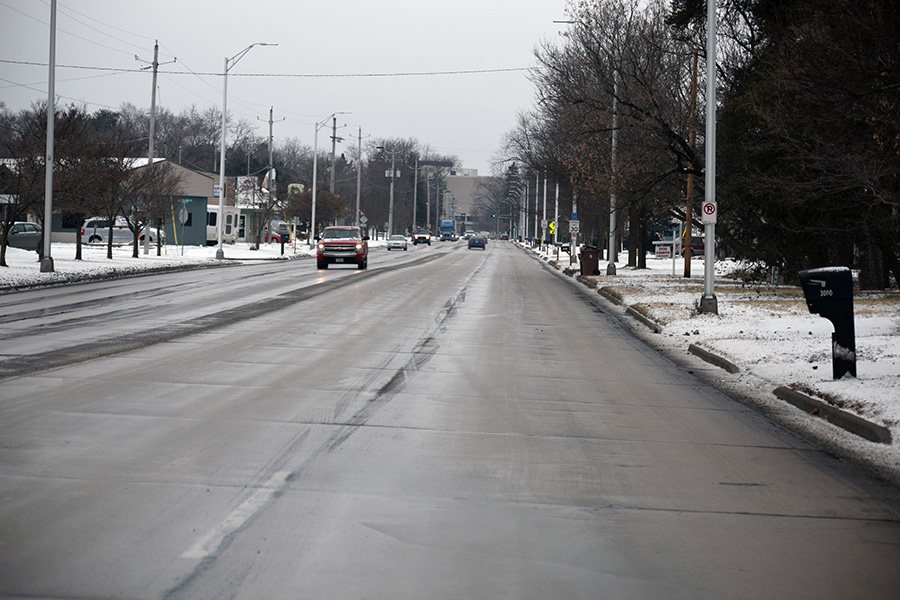Editorial: Tuesday’s election could decide future for Stanley St.
By Brandi Makuski
Elected officials in city, village and county government have a far-reaching influence on our daily lives.
Despite this, municipal elections typically experience a turnout lower than state or national contests, though sometimes a single local issue of particular relevance can improve attendance at the polls.
One such issue might involve Stanley St. So far, a lot of attention has been given to what’s called a “road diet”: turning a four-lane roadway into a single lane in each direction, adding a center turn lane, and including bicycle lanes along each side.
At the heart of the debate is the two council members whose districts border Stanley St. District 2 is represented by David Shorr, who is running unopposed for his second term on April 3; and Cathy Dugan, who is running to keep her District 8 seat, but is being challenged by Lynn Schulist, a newcomer to city politics.
Both Shorr and Dugan support the road diet. Schulist has said she will follow both public input and direction from city engineers.
Advocates for the change say it will calm traffic and increase safety; city engineers agree. Where the two groups differ, though, is whether the change is needed at all: city engineers say the road functions normally, and data related to speed and vehicle crashes along the roadway doesn’t support re-striping the road.
Those who support a road diet argue the road, in its current state, isn’t a good fit for a 21st century city and should be more bicycle-friendly.
Vaguely labeled in its 2018 city budget line as “improvements”, a total of $35,000 was earmarked for work on Stanley St. That line item, along with the rest of this year’s city budget, was approved in October 2017—with no objection from the public.
But public objection over the road diet itself has been frequent and passionate. Some residents who don’t live along the roadway have joined with many who do to oppose the road diet simply on its face. Much of the objection has been heard in various open letters, and during a series of public meetings held on the proposal since 2016.
Dugan co-hosted a meeting in September 2016 at Washington Elementary, which in part introduced to her district the concept of the Stanley St. road diet. That meeting included the presentation of a short video, created by Tori Jennings (prior to Jennings’ being elected to the city council), showing a successful road diet implementation in Tomahawk, along with glowing reviews of the project from some city officials there.
Some facts were left out during that meeting: Tomahawk has a population far lower than Stevens Point—about 3,000 at the last census—has no university, experiences heavy logging traffic and seasonal surges in tourism, and the roadway in the video, according to former Public Works Director Scott Schatschneider, was a different type of corridor than Stanley St.
That initial meeting, according to Mayor Mike Wiza, was not sanctioned by the city. But it certainly looked, sounded and felt like an official city meeting to those who were present; a fact alone that should trouble all residents in the city.
About 70 residents attended that night. Dugan invited several department heads and a city police officer to discuss, among other topics, how the road diet could improve safety and benefit motorists traveling the corridor.
When the meeting ended, Dugan was asked if some in attendance might leave the meeting under the impression the Stanley St. road diet was already an official city project. Dugan’s response was, “I would say that’s accurate”.
It was the first real display of Dugan’s disconnection with the role she was elected to fill, and if that were its only occurrence, the comment could be dismissed as naiveté, as Dugan had then only been a councilwoman for about six months.
But since that time, Dugan has repeatedly changed her stance on the Stanley St. road diet, most recently voicing favor based on what she claimed were the opinions of the city’s head engineers.
She called out Scott Beduhn and Scott Schatschneider, the city’s current and former public works directors, respectively, during a candidate forum on March 5, when she claimed both men said “striping from four-to-three [lanes] is the answer. That’s where I am.”
Not only was that answer opposite her response to the same question about road re-striping at a February candidate forum, when she said constituent feedback formed her opinion to avoid a road diet along the entire roadway, but it was flat out untrue.
Metro Wire staff reached out to both Beduhn and Schatschneider to verify Dugan’s public claims; both men deny having made such a statement.
However it was formed, Dugan’s opinion is shared by a majority of the city council. So far, seven members of the council have voiced support for a road diet. Along with Dugan and Jennings, Cindy Nebel, Council President Meleesa Johnson, David Shorr, Mary McComb and Mary Kneebone have all said they support the re-striping and additional consideration for bicyclists on Stanley St.
Provided their views do not change, that means the city council could vote to move ahead with re-striping, regardless of public opinion.
Others on the council, to include Mike Phillips, Jeremy Slowsinski, Shaun Morrow and Heidi Oberstadt, have all publicly stated they either don’t see a reason to makes changes, or that they will defer to the public works director’s recommendations for the road.
But approving any changes to Stanley St. has much further-reaching implications than many seem to realize, and could set a dangerous precedent in city government. It continues to move forward, and occupy a lot of city staff time, despite the public objection; more disturbingly, despite the contrary facts outlined by the public works director.
It’s bad for staff morale at the city level, and chips away at the delicate trust the public should have for the elected leaders, and that’s not how a representative democracy should operate.

